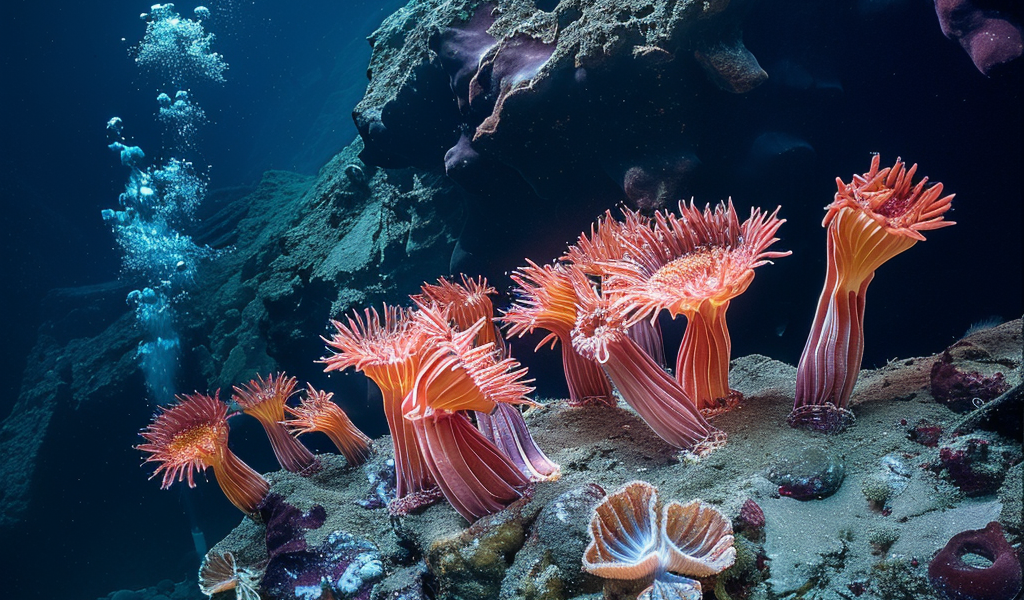In a groundbreaking discovery, scientists have unveiled a previously unknown ecosystem thriving in the depths of the Earth’s oceanic crust. This remarkable finding was made by researchers from the Schmidt Ocean Institute, who utilized advanced submersible technology to explore the Pacific Ocean at depths exceeding 2,500 meters.
During their expedition, the team encountered giant creatures, including adult tubeworms that can reach lengths of up to three meters. These organisms were found inhabiting volcanic caves beneath hydrothermal vents, a habitat that had never been documented before in such detail.
Traditionally, giant tubeworms, known scientifically as Riftia pachyptila, have been observed residing on the ocean floor in proximity to these vents. However, this new research reveals that they can also occupy cavities within the ocean crust itself, suggesting a more complex ecosystem than previously understood. The conditions in these subterranean environments are extreme, characterized by high temperatures, low oxygen levels, and the presence of sulphurous fluids.
In addition to the giant tubeworms, the researchers identified another species known as Paralvinella worms, along with various unique gastropods. The discovery of these organisms has prompted the scientists to propose a potential link between the ecosystems on the ocean floor and those within the crust. They theorize that larvae from these worms and other marine life might traverse through hydrothermal vents, facilitating a connection between these two distinct habitats.
The researchers’ hypothesis was supported when they uncovered adult tubeworms and other vent-dwelling species in the cavities of the subseafloor, further illustrating the interdependence of these ecosystems. This research not only expands our understanding of marine biology but also raises questions about the adaptability of life in extreme environments.
The implications of this discovery are profound, as it challenges existing notions about the limits of life in the ocean. The presence of such large organisms in these harsh conditions suggests that there may be more undiscovered species lurking in the depths of the ocean, waiting to be explored.
This expedition marks a significant milestone in oceanographic research, highlighting the importance of continued exploration of the Earth’s oceans. As scientists delve deeper into the mysteries of the oceanic crust, they are uncovering a wealth of knowledge that could reshape our understanding of marine ecosystems and the resilience of life.
As researchers continue to investigate these newfound habitats, the scientific community anticipates further revelations about the diverse and complex interactions that occur beneath the ocean’s surface. The findings from the Schmidt Ocean Institute’s expedition not only contribute to our knowledge of marine biodiversity but also underscore the need for conservation efforts to protect these fragile ecosystems.
With each new discovery, scientists are reminded of the vastness and mystery of the oceans, encouraging a renewed commitment to exploring and preserving the incredible life that resides within them.





